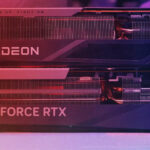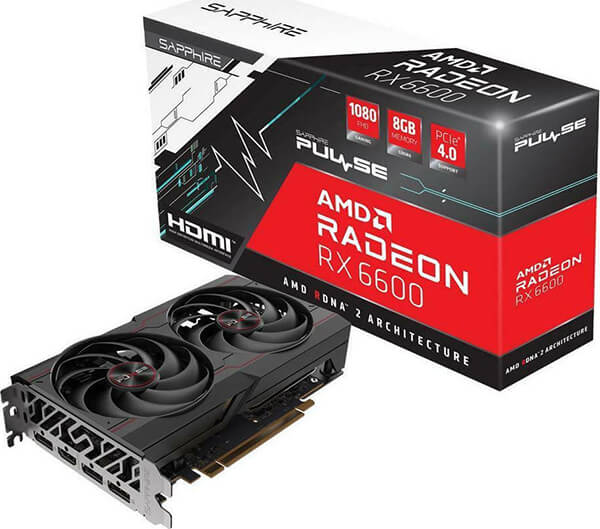Several factors need consideration, including performance, features, pricing, and power consumption. Let’s delve into a detailed comparison:
- Performance:
- The RX 6600 PULSE features the latest AMD RDNA 2 architecture, offering improved performance and efficiency compared to previous generations. It comes equipped with 8GB of GDDR6 memory, providing ample VRAM for high-resolution gaming and multitasking.
- The GTX 1660 Ti, on the other hand, utilizes NVIDIA’s Turing architecture and offers 6GB of GDDR6 memory. While it provides decent performance in 1080p gaming, it may struggle with higher resolutions and more demanding titles compared to the RX 6600 PULSE.
- Ray Tracing and DLSS:
- One significant advantage of NVIDIA’s GTX 1660 Ti is its support for ray tracing and DLSS (Deep Learning Super Sampling) technology. Ray tracing enhances visual fidelity by simulating realistic lighting and reflections, while DLSS improves performance by utilizing AI algorithms to upscale lower-resolution images.
- The RX 6600 PULSE lacks hardware-accelerated ray tracing support, which may impact its ability to deliver next-generation visual effects in supported games. However, it compensates with competitive performance in traditional rasterized rendering tasks.
- Pricing and Value Proposition:
- Pricing varies depending on market availability and regional factors, but historically, the GTX 1660 Ti has been positioned as a mid-range offering with a competitive price-to-performance ratio.
- The RX 6600 PULSE may command a slightly higher price due to its newer architecture and feature set. However, it offers better performance potential in modern games and may provide a more future-proof investment for gamers looking to upgrade.
- Software Ecosystem and Features:
- NVIDIA’s GTX 1660 Ti benefits from the robust GeForce Experience software suite, which includes features like NVIDIA Ansel, ShadowPlay, and Game Ready Drivers for optimized gaming performance and stability.
- AMD’s Radeon Software Adrenalin Edition offers similar functionality, including Radeon Boost, Radeon Anti-Lag, and Radeon Image Sharpening. While not as feature-rich as GeForce Experience, it provides essential tools for optimizing gaming experiences on AMD hardware.
- Power Consumption and Thermals:
- The GTX 1660 Ti tends to be more power-efficient compared to the RX 6600 PULSE, thanks to NVIDIA’s efficient Turing architecture and mature manufacturing process.
- The RX 6600 PULSE may consume slightly more power under load, especially during intensive gaming sessions. However, its PULSE cooling solution ensures efficient heat dissipation, maintaining temperatures within acceptable limits.
In conclusion, both the SAPPHIRE AMD Radeon RX 6600 PULSE Gaming 8GB GDDR6 and the NVIDIA GTX 1660 Ti 6GB offer compelling options for mainstream gamers. The choice between the two ultimately depends on individual preferences, budget considerations, and desired performance levels. While the GTX 1660 Ti excels in ray tracing and DLSS-supported titles, the RX 6600 PULSE delivers strong rasterized performance and a more future-proof feature set, making it an attractive option for gamers seeking excellent 1080p and 1440p gaming experiences.











